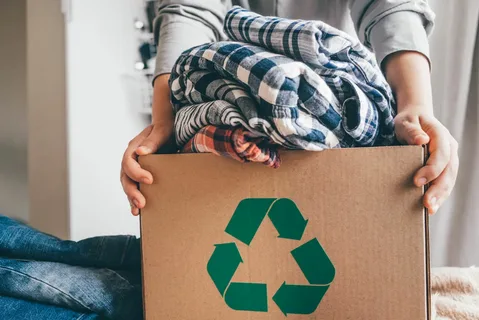In today’s world, sustainability is more important than ever, and one of the most overlooked but essential areas of focus is textile recycling. Every year, millions of tons of textiles end up in landfills, contributing to pollution and the depletion of natural resources. However, textile recycling offers a promising solution to mitigate these environmental challenges, while also providing economic and social benefits. In this blog, we will explore why textile recycling is so important and how it helps to create a more sustainable, eco-friendly world.
Understanding Textile Waste: A Global Challenge
The textile industry is one of the largest in the world, yet it also generates an immense amount of waste. According to estimates, over 92 million tons of textile waste are produced each year globally. In the U.S. alone, nearly 17 million tons of textile waste are sent to landfills annually. This waste consists of clothing, upholstery, footwear, and other fabric-based products. Unfortunately, the majority of these textiles are not recycled, often due to a lack of proper infrastructure and awareness.
Traditional disposal methods, such as incineration or landfilling, not only contribute to pollution but also waste valuable resources. Many textiles are made from natural or synthetic fibers that could be repurposed, reused, or recycled into new products. This makes textile recycling an essential part of the circular economy, which seeks to reduce waste, increase resource efficiency, and extend the lifespan of materials.
What is Textile Recycling?
Textile recycling is the process of reprocessing used clothing and fabric products to create new items, rather than discarding them. There are two primary types of textile recycling: mechanical and chemical.
- Mechanical Recycling: This method involves shredding and processing textiles to be reused in a variety of applications. For example, old t-shirts can be transformed into cleaning rags or insulation materials. Mechanical recycling is more common because it is less expensive and requires less technological investment.
- Chemical Recycling: This is a more advanced process where textiles are broken down into their chemical components and then reprocessed into new fibers. Chemical recycling allows for the recovery of materials like polyester, which is a common fabric found in many clothing items. This method is still in its early stages but has great potential for scaling up textile recycling efforts.
The Environmental Benefits of Textile Recycling
Textile recycling helps reduce the environmental impact of textile waste in several ways:
- Reducing Landfill Waste: By recycling textiles, fewer clothes and fabrics end up in landfills, where they can take decades to decompose. Synthetic fabrics, such as polyester and nylon, are particularly harmful to the environment because they are not biodegradable and release harmful chemicals as they break down.
- Conserving Natural Resources: Textile recycling helps conserve valuable natural resources. For instance, recycling cotton fabric means fewer trees are cut down for new textiles, and recycling polyester reduces the need for petroleum-based raw materials.
- Energy Efficiency: Recycling textiles generally requires less energy compared to manufacturing new fabrics from raw materials. For example, recycled polyester requires 59% less energy than producing virgin polyester.
- Lowering Carbon Footprint: By reducing the need for new textile production, textile recycling helps lower carbon emissions. The fashion and textile industries are responsible for a significant amount of global greenhouse gas emissions, so shifting to recycling can play a vital role in fighting climate change.
The Economic Benefits of Textile Recycling
Textile recycling doesn’t only benefit the environment; it can also provide significant economic advantages. Here’s how:
- Job Creation: The recycling industry, including textile recycling, creates a wide range of jobs, from collection and sorting to processing and manufacturing. This can help boost local economies and create employment opportunities.
- Reducing Production Costs: For manufacturers, using recycled materials can lower production costs. Instead of relying on expensive raw materials, recycled textiles can be used to create new products at a lower cost, thus increasing profitability.
- Supporting Circular Economy: By supporting recycling initiatives, companies can adopt more sustainable and ethical business practices. This aligns with the growing consumer demand for eco-friendly products and can enhance a company’s reputation.
How Can You Contribute to Textile Recycling?
Everyone can play a role in the textile recycling process, whether you’re an individual consumer, a business, or a government entity. Here are some steps you can take to contribute:
- Donate or Sell Old Clothes: Instead of throwing away your old clothes, donate them to charitable organizations or sell them through second-hand shops or online platforms. Many items that are no longer wearable can be repurposed or recycled.
- Recycling Programs: Check for textile recycling programs in your local area. Many cities and towns have drop-off locations where you can recycle your old clothing. Additionally, several retailers offer take-back programs where they accept old garments for recycling.
- Buy Recycled Products: Support brands and companies that use recycled textiles in their products. By purchasing recycled or upcycled items, you help close the loop and encourage the fashion industry to adopt more sustainable practices.
- Educate and Advocate: Raise awareness about the importance of textile recycling and encourage others to take action. By educating others on the environmental impact of textile waste and the benefits of recycling, you can help spread the word and drive change.
Conclusion: A Step Toward a Sustainable Future
Textile recycling is an essential part of building a sustainable future. By reducing waste, conserving resources, saving energy, and lowering carbon emissions, textile recycling plays a crucial role in minimizing the environmental impact of the fashion and textile industries. As consumers, businesses, and governments work together to support and promote recycling initiatives, we can move closer to achieving a circular economy and creating a cleaner, greener planet for future generations.
The next time you clean out your closet or dispose of old clothing, think twice and consider how your actions can contribute to the growing movement of textile recycling. Every small change counts when it comes to protecting our planet.
visit : meth-streams
